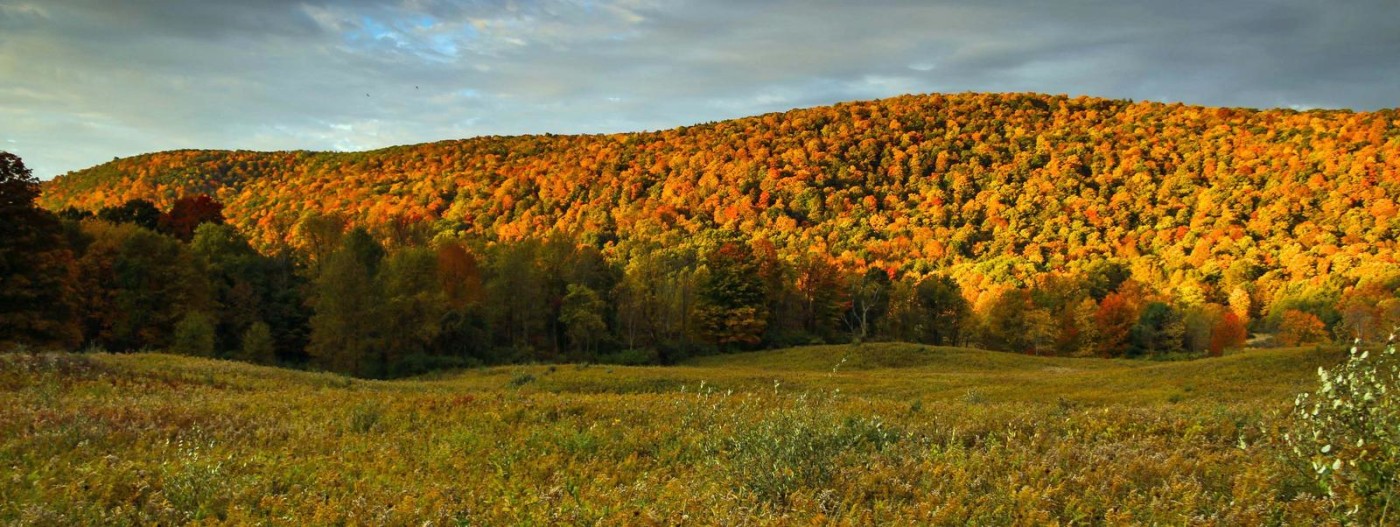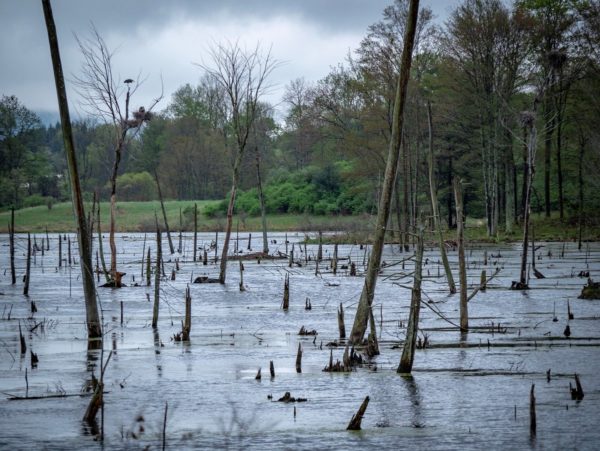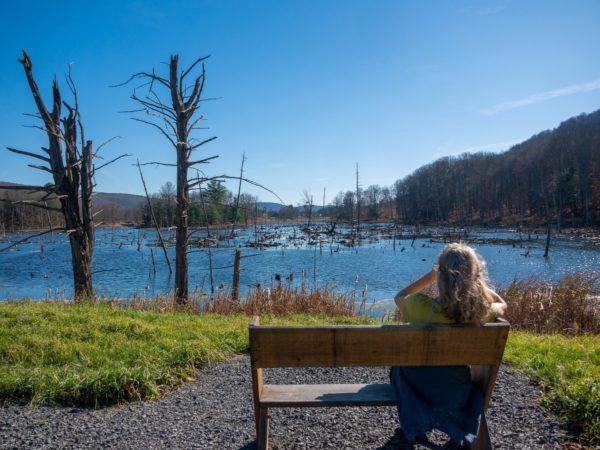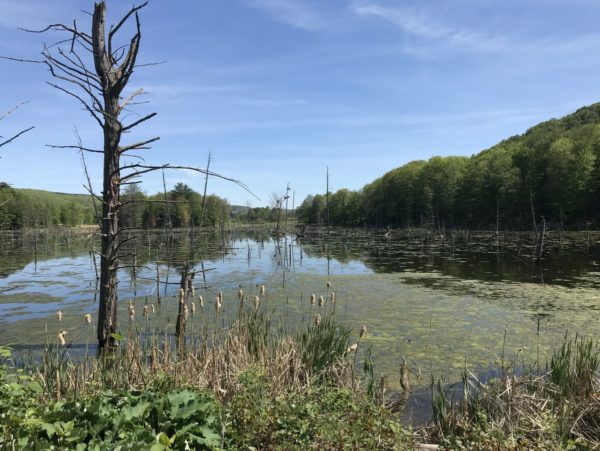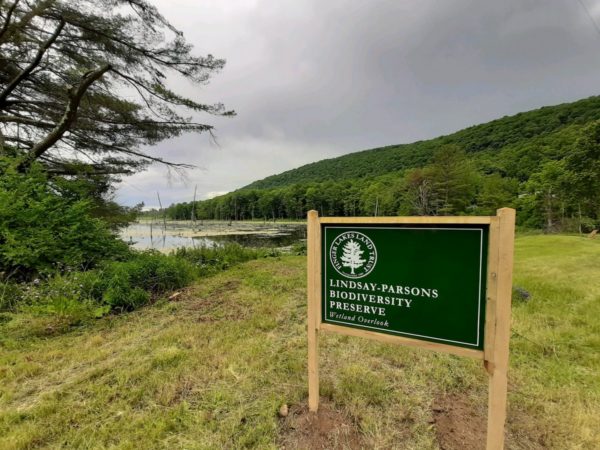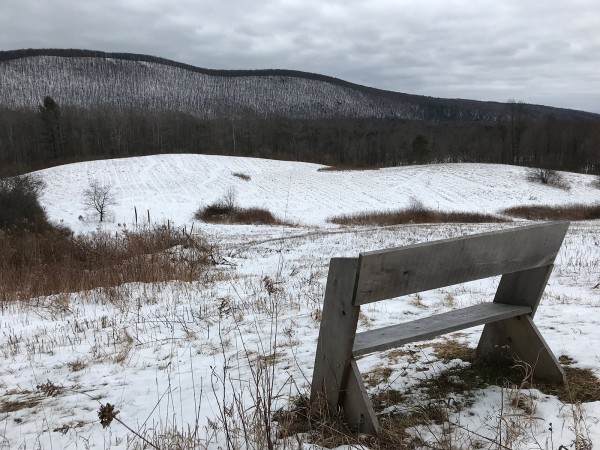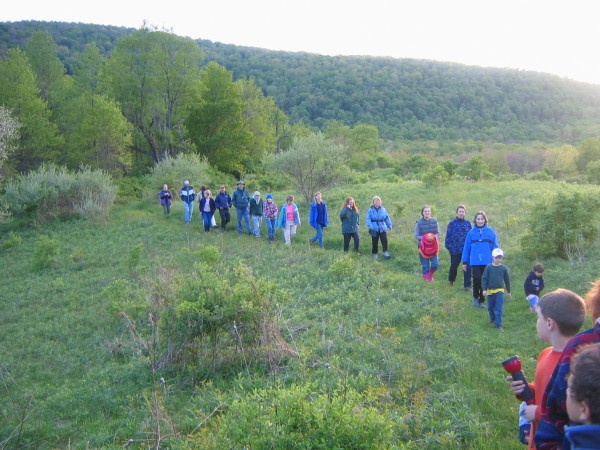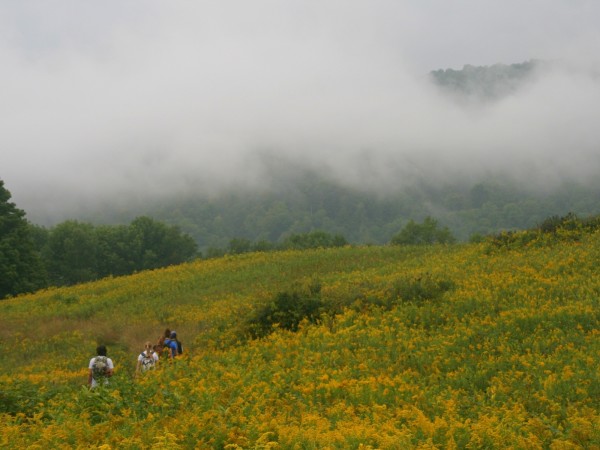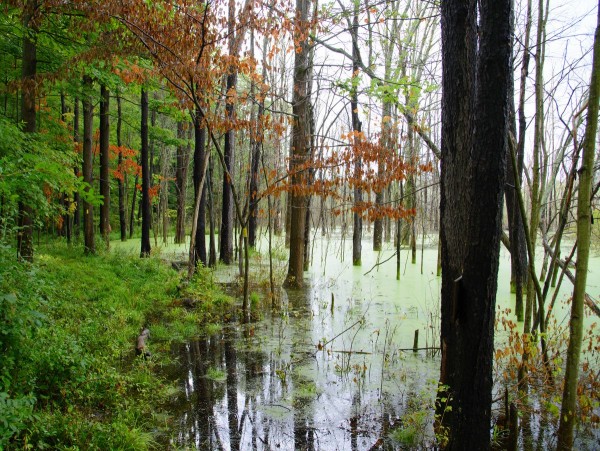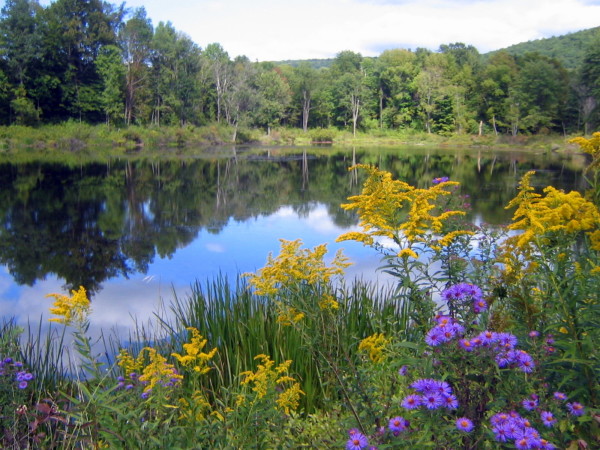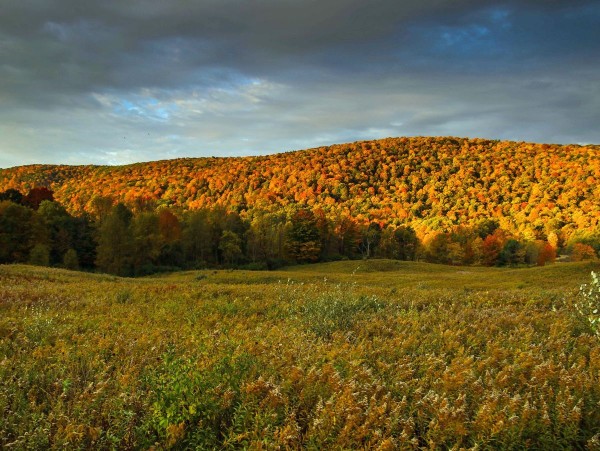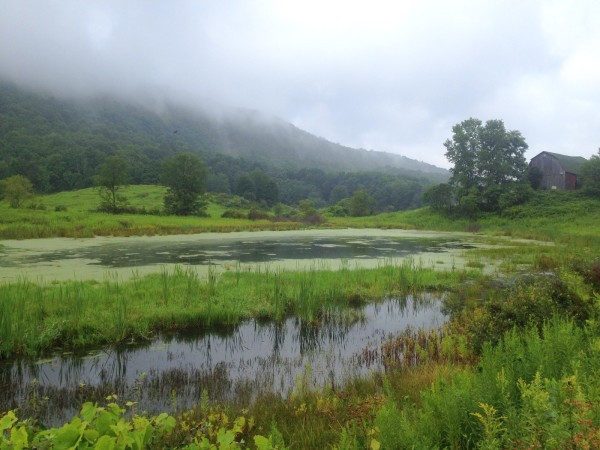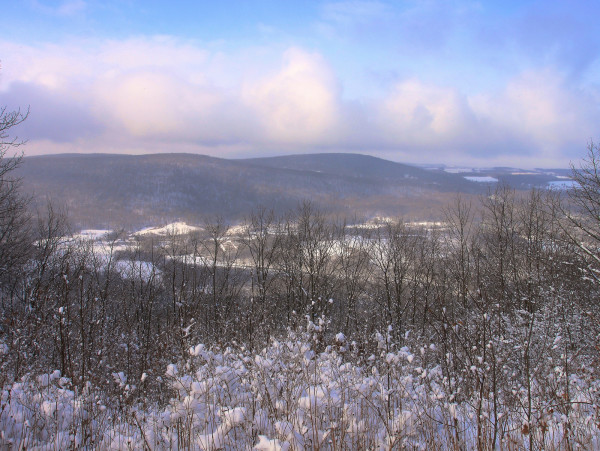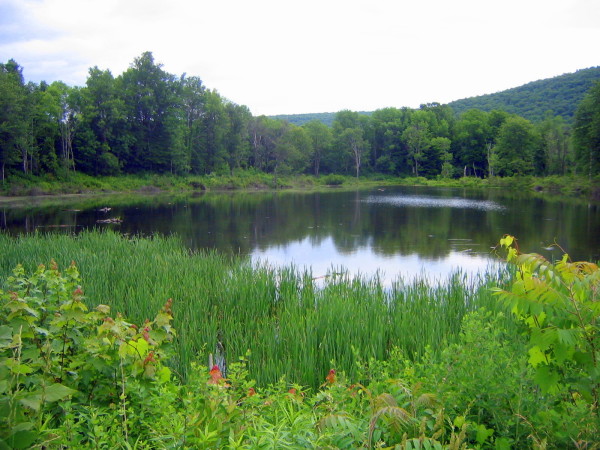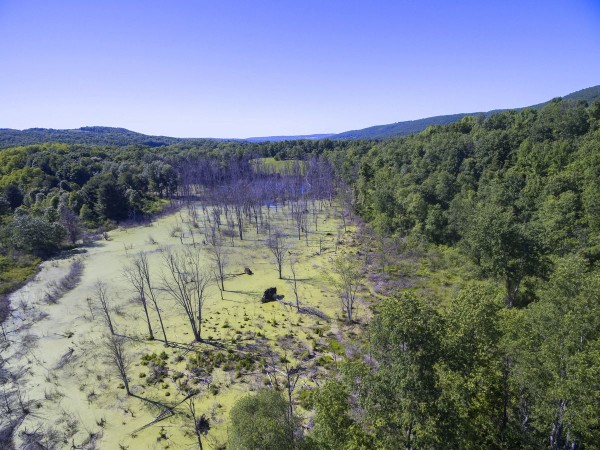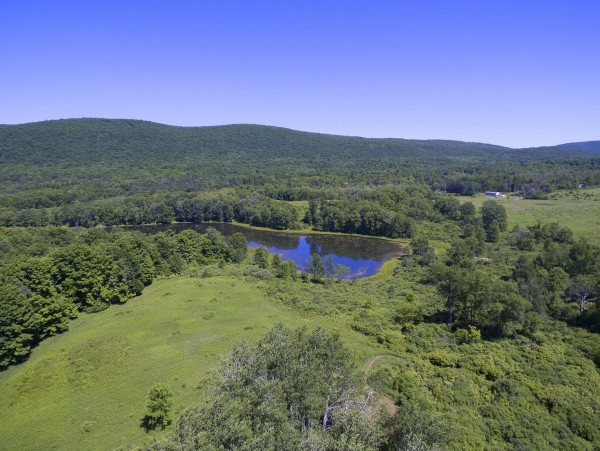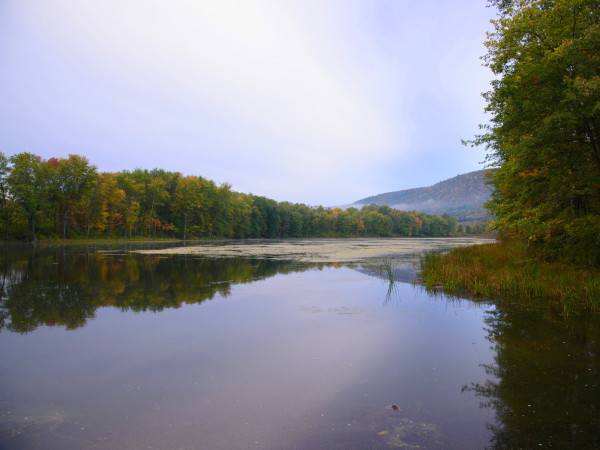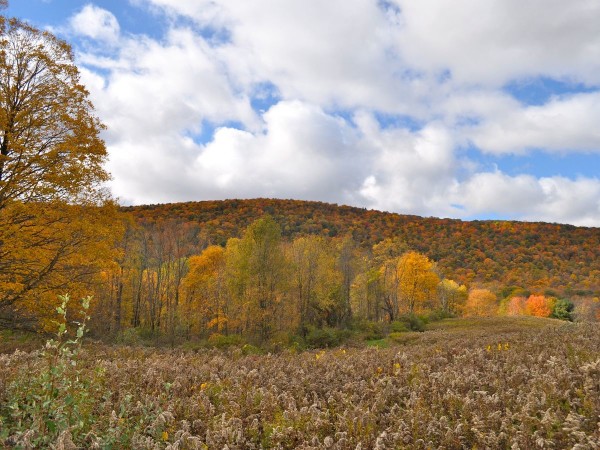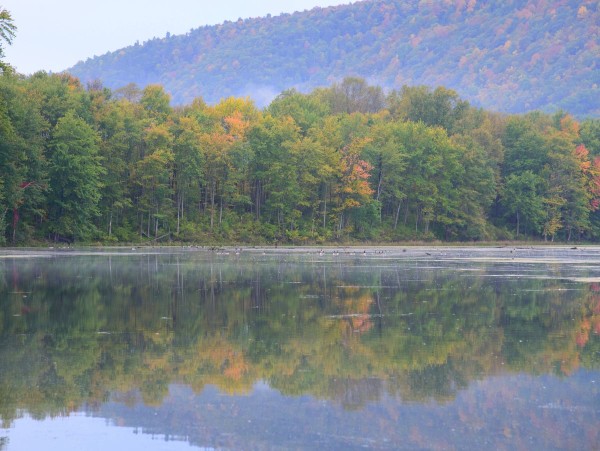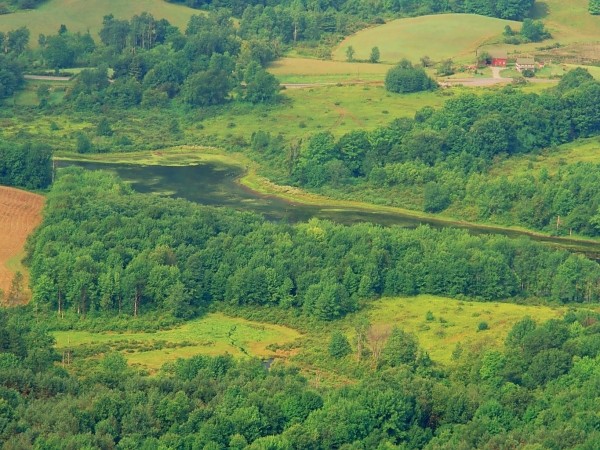The Lindsay-Parsons Biodiversity Preserve consists of 554 acres of lakes, forests, meadows, brushland, gorges, streams, and wetlands. The diverse habitats found in the preserve are home to an equally diverse variety of flora and fauna. Some rare species have been identified in the preserve although a thorough inventory has not yet been completed. The preserve provides an exceptional place for bird watching; for example, in May 1995, during a two-hour period, 76 species of birds were counted!
There are several trails at the Lindsay-Parsons Biodiversity Preserve, and the public is welcome to visit. Trails on the property lead to the forest, the lake, and the beaver pond.
One of the Land Trust’s and the Cornell Institute for Research in Chemical Ecology (CIRCE)’s goals for this preserve was to make it the world’s first temperate-zone preserve for research in biodiversity and chemical ecology. With this aim in mind, the scientists and students at Cornell have used the preserve to study the chemical interactions of organisms there. In addition, the preserve may also be used by the public for hiking, skiing, birding, and nature walks. Due to the size and diversity of this preserve, it is ideal for use by area colleges and schools for different educational purposes. It also provides a place for quiet contemplation.
A wetland overlook offering plenty of wildlife viewing opportunities can be found on Sylvan Lane next to the West Danby Firehouse. Opposite the main preserve entrance, the wetlands are home to river otters, Great Blue Herons, Kingfishers, and many other creatures.
After many years of focused dedication, the Land Trust can claim stewardship of the world’s first temperate zone preserve for research in chemical ecology. News coverage of the Lindsay-Parsons Biodiversity Preserve in West Danby has been widespread and rewarding. The Lindsay-Parsons Biodiversity Preserve has been featured in the Canadian Broadcasting Company’s “As It Happens,” National Public Radio’s “Living on Earth,” the New York Times, the Albany Times Union, and the Syracuse Herald.
The preserve was named after Anne Marguerite Victoria Lindsay, from North Bay, Ontario, and Wilbur Fay Parsons, who was from Central New York. We are thankful for the generosity and sense of land stewardship of their daughter, Elizabeth Parsons Kirchner of State College, Pennsylvania. Ms. Kirchner made a generous lead gift to the Land Trust in honor of her parents who instilled in her a lifelong love of nature.
In 1998, Edmond G. Blumner also made a generous gift supporting the project, in memory of his wife, Celia. Mr. Blumner graduated from Cornell University in 1931 and read about the project in the Cornell Alumni Magazine — the same article that inspired Elizabeth Kirchner to help with the project.
Thirty-six and a half of the 554 acres were given to the Finger Lakes Land Trust by Tompkins County, while the remainder has been donated or purchased from private landowners.

